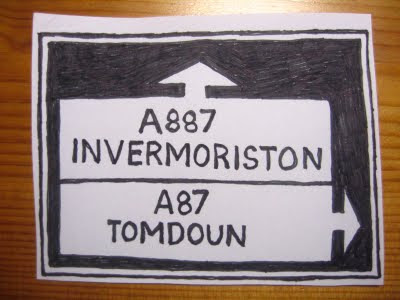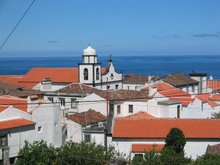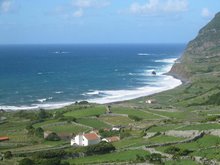
The first king in the book is Kenneth I, better known as Kenneth MacAlpin. He was King of Dalriada, the Gaelic Scottish kingdom centred on modern day Argyll. In about 843AD he became the king of Pictland as well and thus was born a "United Kingdom of Scots and Picts" called Alba. This was the nucleus of what was to develop into the kingdom of Scotland.
The exact process by which Kenneth achieved this union is not well understood by historians but it's not as simple as that he married an heiress and/or won a decisive battle of conquest. It was more likely the culmination of a drawn out process over decades (doubtless involving battles and marriages) but what we do know is that Pictish culture and language was replaced by Gaelic in a remarkably short space of time in the late 9th century.
Though Kenneth MacAlpin is listed as "the First King of Scotland", it's important to remember the limits of his kingdom of Alba: its southern boundary was the Forth-Clyde line rather than Solway-Tweed which eventually came to mark the south boundary of Scotland. The north boundary of Alba is uncertain but in the east it's likely to have been the Mounth - the watershed between the Rivers Tay and the Dee. To the north was a huge slab of territory south of the Norwegians (Vikings) in Caithness-Sutherland which historians call Moray. Its political relationship to Alba in the latter centuries of the first millenium AD is obscure even by the standards of the Dark Ages but I think I'm right in saying that Moray became "gaelicised" at around the same time as southern Pictland so take from that what you will.
What's most significant about the takeover of southern Pictland by the Scots of Dalriada in the mid-9th century is that it was the first in a series of "building blocks" by which the eventual kingdom of Scotland crystallised out of a series of smaller principalities. The same process was going on to the south in what would eventually become England but in the mid-9th century was still Wessex and Northumbria and sundry other -ssexes and -ias (and Vikings, Norwegian and Danish).
More of all that anon. but I leave you with a quiz question - Who was the last King of Scotland?
A. George VI
B. William III
C. James VI
D. James VIII
Fastest finger first!























